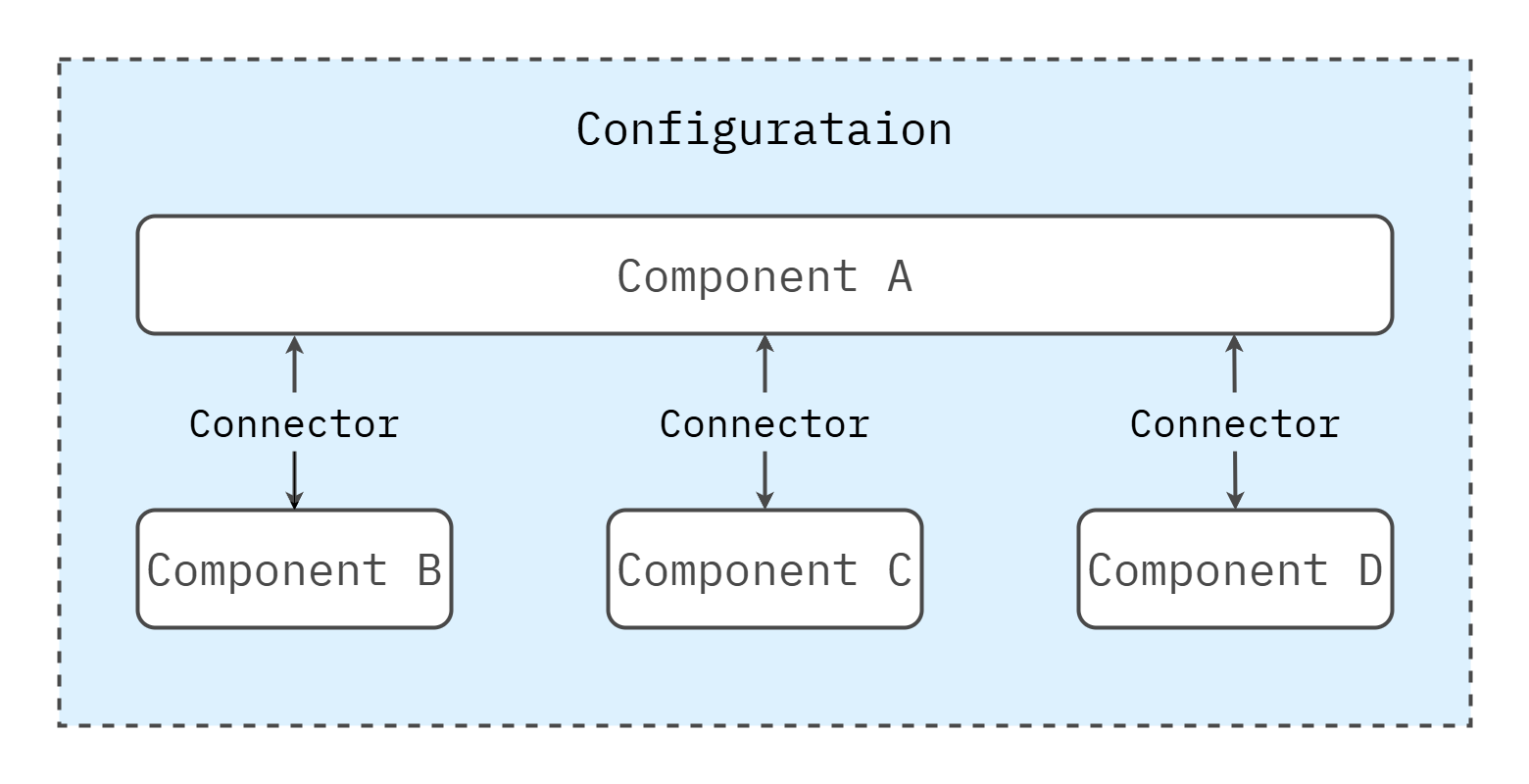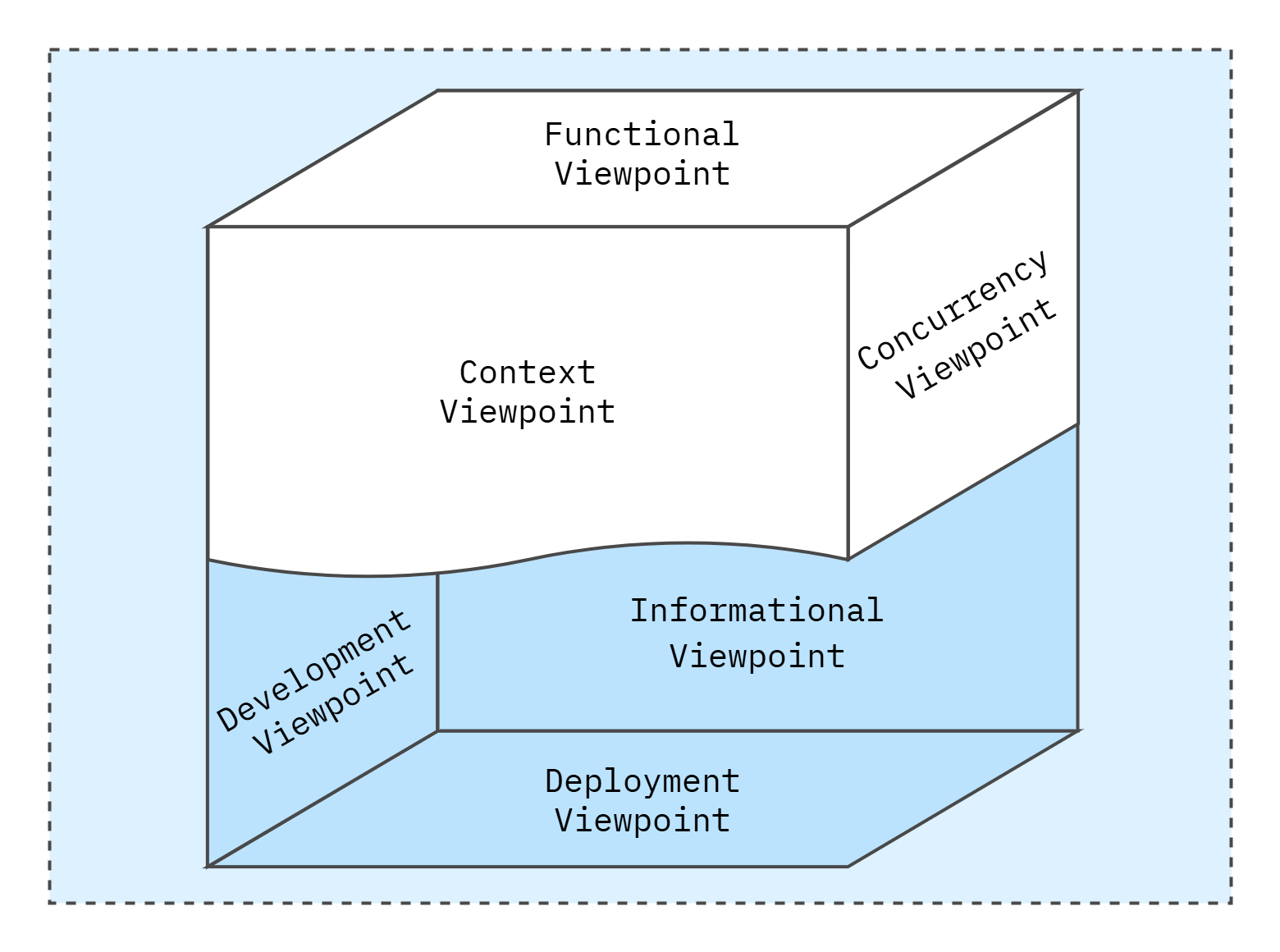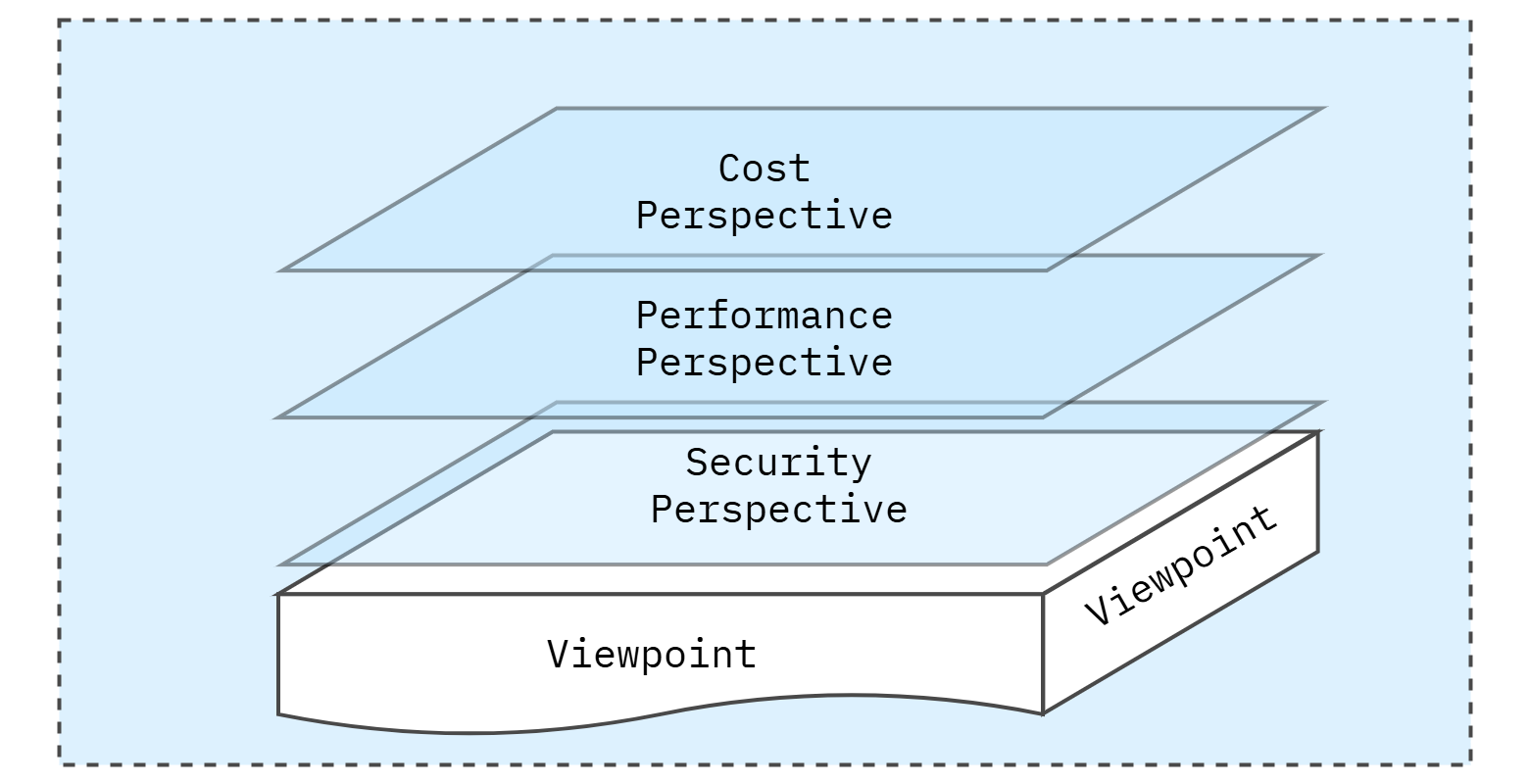Visualizing Architecture
This article explains how to visualize different aspects of architecture.
Why visualizing is important?
Visualizing software architecture is essential for several reasons, each contributing to the success of the system’s design, development, and ongoing maintenance. At its core, visualization transforms complex and abstract architectural concepts into concrete, understandable representations, significantly impacting the project’s efficiency, communication, and overall quality.
- Managing Complexity: Modern software systems are incredibly complex, often composed of multiple interconnected components, services, and subsystems. Visualization breaks this complexity into manageable pieces, making comprehending how various elements work together easier. By representing the system in diagrams and models, architects can focus on specific aspects without being overwhelmed by the entirety of the system.
- Improving Communication: Software architecture involves multiple stakeholders, from developers and engineers to business executives and clients, each with their concerns. Visualizations help bridge the gap between these diverse groups, offering a common language that all parties can understand. Clear architectural diagrams facilitate better communication, ensuring everyone is on the same page regarding system design, functionality, and requirements.
- Facilitating Decision-Making: Architectural decisions often involve trade-offs between performance, security, scalability, and other quality attributes. Visualizing the architecture enables architects to map out these trade-offs and explore different scenarios. This approach allows decision-makers to evaluate the impact of particular choices and ensures that all critical aspects are considered before finalizing the design.
- Ensuring Alignment with Stakeholder Needs: Different stakeholders have varying priorities and concerns. Visualization helps ensure that the system’s architecture addresses these concerns by providing multiple views tailored to specific needs, such as security, deployment, or functionality. This targeted approach helps prevent misunderstandings and ensures that all stakeholder requirements are considered early in the design process.
- Supporting Future Evolution: Systems evolve due to changing requirements, new technologies, or business needs. A well-visualized architecture offers a roadmap for future changes by clearly outlining the system’s structure and dependencies. It allows architects and developers to predict the impact of modifications, making it easier to adapt the system while maintaining its integrity and performance.
Key Elements of Architecture Visualization
Three primary elements form the foundation of any software architecture: components, connectors, and configurations. These elements represent the system’s internal structure and dictate how its various parts interact and work together to achieve its goals.

Components: The Building Blocks of Software Systems
Components are the core building blocks of a software system, representing units of functionality that perform specific tasks or provide services. These units can range from classes and objects in an object-oriented system to services and microservices in a service-oriented architecture. They encapsulate the logic and data processing within the system and are typically designed to be modular and reusable.
In software architecture visualization, components are often represented as boxes or modules in diagrams, where each component is clearly defined by its role within the system. For instance, a web application’s component might represent the user interface, a backend service, or a database access layer. By visualizing components in this way, architects can provide a clear understanding of how each piece of the system contributes to the overall functionality.
Components can also have various levels of granularity, from small, single-function components to large subsystems composed of many interacting parts. Visualizing these components helps clarify the responsibilities of each module and how they interact with other parts of the system. A well-designed system ensures that each component is cohesive, with a single responsibility, while being loosely coupled to other components, allowing for flexibility and ease of maintenance.
Connectors: Facilitating Interaction Between Components
Connectors are the elements that define how components communicate and interact with each other. In any software system, components rarely operate in isolation—they must exchange data, send commands, and coordinate their activities to achieve the system’s objectives. Connectors represent this interaction and are a critical aspect of the overall architecture.
Connectors can take many forms, from simple method calls or function invocations in a tightly coupled system to more complex mechanisms like message-passing, event-driven interactions, or remote procedure calls in distributed architectures. In software architecture visualization, connectors are often depicted as lines or arrows between components, indicating the direction and type of communication.
The nature of the connectors used in a system can significantly impact its performance, scalability, and flexibility. For example, synchronous connectors that require an immediate response from a component might introduce delays and bottlenecks. In contrast, asynchronous connectors, such as message queues, allow for more flexible and scalable communication patterns. Visualizing these connectors helps architects make informed decisions about how components interact to meet performance, scalability, and reliability goals.
Moreover, connectors also reflect the system’s communication protocols and mechanisms, such as RESTful APIs, WebSockets, or database queries. In large systems with many interacting components, visualizing these connectors helps uncover potential bottlenecks, inefficiencies, or areas where improved communication strategies could benefit the system.
Configurations: Arranging Components and Connectors
Configurations define the overall arrangement and organization of components and connectors, forming the complete structure of the software system. They represent how the different pieces of the system fit together to fulfill the system’s requirements, providing a holistic view of the architecture.
Configurations are crucial for understanding the system’s design and how it can evolve. They help illustrate which components communicate directly, which are isolated from one another, and how the system as a whole operates. For instance, in a layered architecture, components might be grouped into different layers based on their responsibilities, such as presentation, business logic, and data access. Visualizing these configurations helps highlight the system’s modularity and separation of concerns, which are vital principles for maintaining a scalable and maintainable system.
By visualizing configurations, architects can ensure that the relationships between components and their interactions align with the system’s goals. This might include optimizing the configuration for performance by minimizing inter-component communication or enhancing security by isolating sensitive components within secure environments. Overall, configurations provide the big-picture view of how the system operates as a cohesive whole, balancing the needs of all stakeholders.
Addressing Stakeholder Concerns Through Visualization
Stakeholders play a crucial role in software architecture, as their concerns and requirements shape the system’s design. These stakeholders can include end-users, developers, operators, and business executives, each with priorities and expectations. Visualization is essential for aligning the architecture with stakeholder needs by providing precise and tailored views of the system.
For instance, developers might be interested in understanding the detailed interactions between components to implement functionality. At the same time, business executives may focus on how the architecture will support scalability and future growth. Visualizations catering to different stakeholder groups help address all relevant concerns, preventing miscommunication and misunderstandings.
Architects can create multiple visual representations of the architecture to give stakeholders a clear view of how the system addresses their specific concerns. This improves the overall design process and helps build trust and confidence among stakeholders that the architecture will meet their expectations.
Views and Viewpoints
In software architecture, views and viewpoints are essential tools that allow architects to create structured representations of a system, helping to manage its complexity and address various stakeholders’ concerns. Focusing on specific aspects, views, and viewpoints enables clear communication and understanding, especially when dealing with large, intricate systems.
What is a Viewpoint?
A viewpoint serves as a framework or guideline for constructing an architectural view. It defines the particular concerns that need to be addressed, the system components to include, and the notations or models used for depiction. Viewpoints streamline the architectural process by offering established templates, making developing views focused on specific aspects of the system’s structure or behavior easier.
Each viewpoint targets the concerns of a different stakeholder group, such as developers, operators, or business executives, helping architects focus on relevant aspects while ensuring nothing critical is overlooked.

Key Viewpoints
The following are essential viewpoints, as outlined in the “Software Systems Architecture” methodology:
- Context Viewpoint: This viewpoint focuses on how the system interacts with its external environment, including relationships with other systems, people, and external entities. It is essential to understand the system’s scope and how it fits into a larger ecosystem.
- Functional Viewpoint: This view describes the system’s primary functions and behaviors, including how different elements interact to provide required services. It is often a cornerstone for stakeholders, highlighting how the system achieves its objectives.
- Information Viewpoint: This viewpoint focuses on how the system manages, processes, and stores information. It outlines data flow, data structure, and how data is manipulated within the system. This viewpoint is essential for stakeholders concerned with data management, such as data architects and developers.
- Concurrency Viewpoint: Describes how the system handles parallel processes, tasks, and thread management. It ensures the system can handle multiple operations simultaneously without conflict, making it crucial for performance-focused stakeholders.
- Development Viewpoint: This viewpoint centers on how the system will be developed, focusing on code structure, software modules, and their relationships. It supports stakeholders involved in the system’s building and maintenance, such as development teams and project managers.
- Deployment Viewpoint: This viewpoint describes the physical and technical environment where the system will run, including servers, hardware, and network configurations. It is crucial for operations and infrastructure teams to ensure that the system functions as expected in its deployment environment.
- Operational Viewpoint: This view focuses on the system’s operational aspects, including monitoring, maintenance, and administration. It addresses concerns such as system resilience, fault management, and uptime, which are critical for stakeholders responsible for system management post-deployment.
The Importance of Views and Viewpoints
Using multiple views and viewpoints provides a structured method for managing the complexity of modern software systems. It helps:
- Enhance communication by creating views that focus on the specific concerns of different stakeholder groups.
- Manage complexity by dividing the system into manageable sections. This will make it easier to address concerns and ensure clarity.
- Ensure all aspects are addressed, as each viewpoint highlights a critical aspect of the architecture, from functionality to deployment.
This approach allows architects to create detailed, well-structured descriptions of the system that align with the priorities of all stakeholders, ultimately leading to better architectural decisions and more successful project outcomes.
Perspectives
In software architecture, perspectives are used to ensure that critical quality attributes, such as security, performance, or scalability, are consistently considered throughout the design of a system. Unlike viewpoints, which focus on specific aspects of the architecture (such as functionality or data flow), perspectives address cross-cutting concerns that impact the entire system. They help architects ensure that important qualities are systematically integrated into the architecture across multiple views.
What is an Architectural Perspective?
An architectural perspective provides a structured approach to incorporating quality attributes into the system’s design. Rather than being limited to a single view, perspectives cut across multiple views, ensuring that qualities like security, performance, and evolution are factored into every aspect of the architecture. Perspectives offer a set of activities, tactics, and guidelines to help architects ensure that the system meets its quality goals, from concept to implementation and maintenance.

Key Perspectives
The “Software Systems Architecture” framework outlines several critical perspectives architects can apply to achieve specific quality attributes. These include:
- Security:
- Focuses on ensuring that the system reliably controls access to sensitive resources. It encompasses managing users’ access rights, protecting data confidentiality, and ensuring integrity and accountability. This perspective applies to any system where user identity and resource access are significant concerns.
- Cost:
- Focuses on understanding, estimating, and optimizing the financial implications of architectural decisions across the system’s lifecycle.
- Performance and Scalability:
- Ensures the system can handle its required workload efficiently and scale to meet future demands. This perspective focuses on optimizing system performance and ensuring that the architecture can support increased volumes of data or users without degradation.
- Availability and Resilience:
- Focuses on keeping the system operational, even during failures. This perspective emphasizes building a fault-tolerant system, ensuring it remains available to users and can recover from potential disruptions.
- Evolution:
- Addresses the system’s ability to adapt and change over time. This perspective ensures the system can evolve with changing requirements, technologies, or environments while balancing the costs and risks of such flexibility.
- Development Teams:
- Focuses on ensuring the system can be built, deployed, and maintained within time, budget, and available personnel constraints. It ensures that development resources are efficiently managed throughout the project lifecycle.
- Internationalization:
- Ensures the system can operate across different languages, regions, and cultural settings. This perspective is particularly important for global applications catering to diverse users.
- Location:
- Addresses challenges arising from system components’ physical distribution, such as network latency or geographic constraints. This perspective is critical for distributed systems where the location of components can impact performance and reliability.
Benefits of Applying Perspectives
Perspectives help architects ensure that quality attributes are not overlooked during system design. They provide a comprehensive framework for evaluating how well the system meets essential non-functional requirements, allowing for more informed decisions about trade-offs between qualities like security and performance. Additionally, applying perspectives across multiple views helps ensure that these concerns are consistently addressed throughout the architecture, from development to deployment.
In practice, perspectives guide architects in ensuring that quality attributes are integrated into every project stage, helping them balance these concerns while delivering a system that meets functional and non-functional goals.
These perspectives form a crucial part of architectural design, ensuring that essential qualities are embedded within the architecture from the outset.
Recommended Reading
Articles
- Rozanski, Nick and Woods, Eoin.“Viewpoints in Software Systems Architecture.”. This article offers a comprehensive explanation of viewpoints in software architecture, defining their role in addressing stakeholder concerns and providing guidance on how to apply them effectively in structuring system architecture. It includes detailed descriptions of key viewpoints such as Functional, Information, and Deployment.
- Rozanski, Nick and Woods, Eoin. “Perspectives in Software Systems Architecture”. This article explores the role of perspectives in addressing cross-cutting concerns like security, performance, and scalability in software architecture. It explains how perspectives complement viewpoints by ensuring that crucial quality attributes are applied across all system architecture aspects.
Books
- Rozanski, N., & Woods, E. (2011). Software systems architecture: Working with stakeholders using viewpoints and perspectives . Addison-Wesley.
- Part I - Architecture Fundamentals
Part I introduces the core concepts of software architecture , including components, connectors, and configurations, as well as the importance of addressing stakeholder concerns . It explains how viewpoints and views are used to manage architectural complexity by providing multiple perspectives on the system. The section also covers architectural perspectives like security and performance, which influence various views, and defines the key responsibilities of the software architect in guiding the system’s development.
- Part I - Architecture Fundamentals